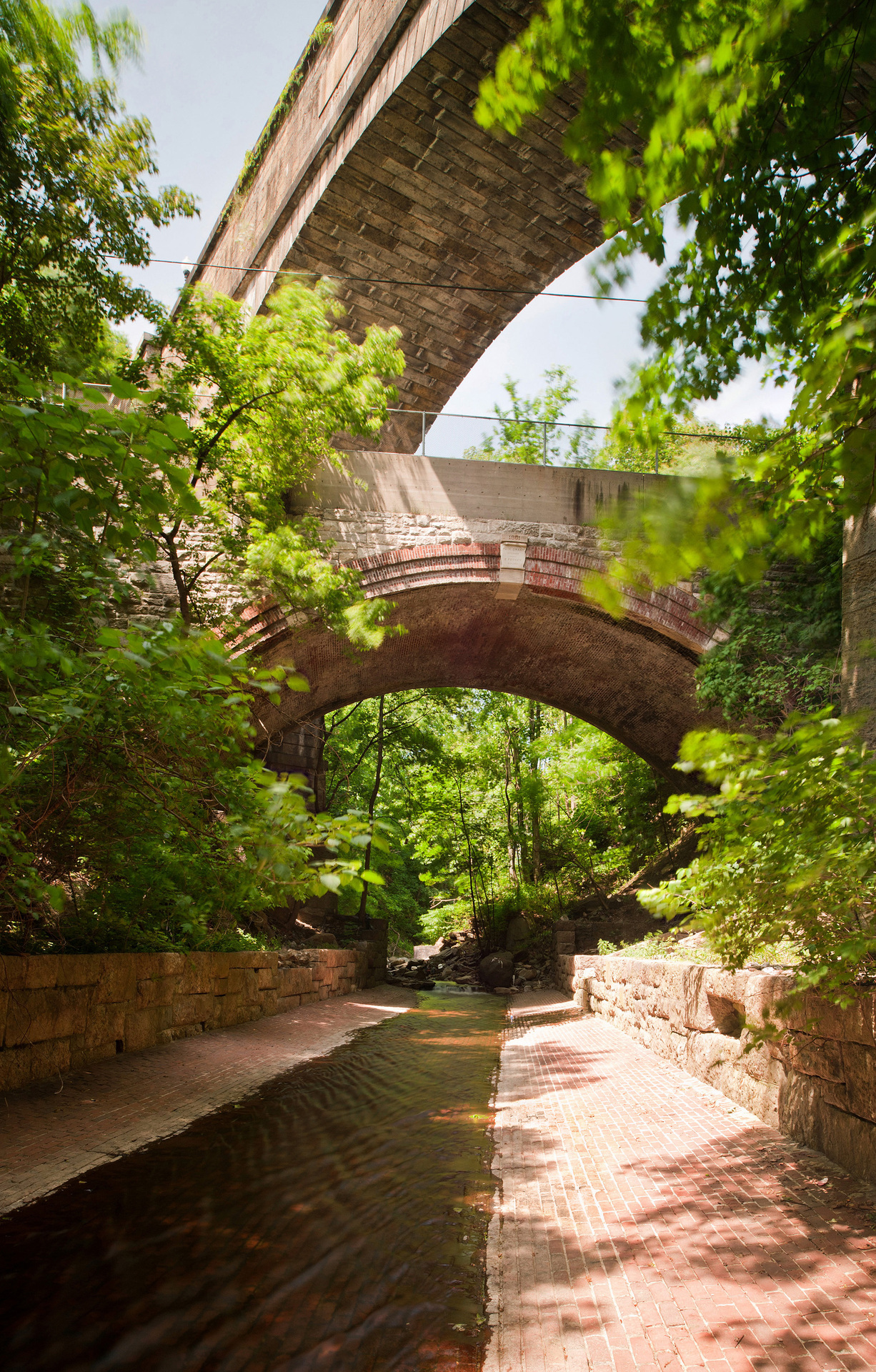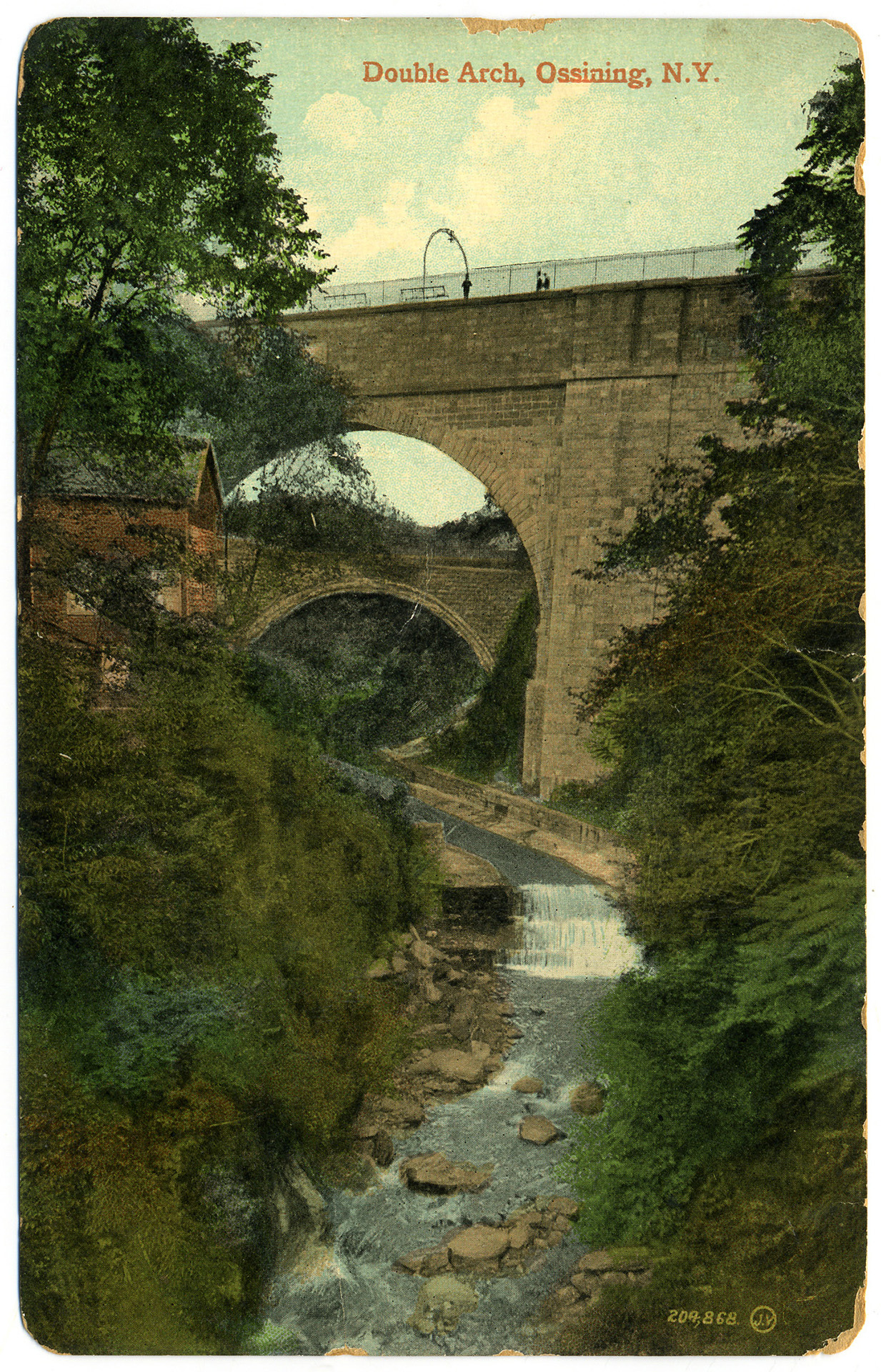Double Arch Bridge
Then
The Double Arch Bridge is located in the Villiage of Sing Sing, part of Ossining, New York. Both bridges cross the Sing Sing Kill (also known as Kill Brook). Like the High Bridge, the upper arch of the Double Arch Bridge carried the Old Croton Aqueduct. Engineer John Bloomfield Jervis had picked up in 1836 where Major David B. Douglass left off, making only small changes to Douglass’ planned route for the aqueduct and designs for the water conduits. However, Jervis left his mark on the various structures located along the route, especially its bridges. He designed the upper arch across the Sing Sing Kill, in the town now known as Ossining. Construction began in 1839 and the Croton Aqueduct opened in 1842.
The lower bridge is also a masonry arch, and it was initially a private road to a nearby estate. It was built in 1861 and opened the following year. Its plaque names H. Grant as the engineer and B. Foshay as the builder.

Double Arch Bridge, 2011
Now
The Double Arch Bridge has become the symbol of Ossining; the town uses its image on its official seal, which appears on signs and the town’s website. The lower bridge is open to traffic and carries Broadway under the Aqueduct Bridge and over the Sing Sing Kill.
The bridges are part of Ossining’s downtown historic district. The Croton Aqueduct has been added to the National Register of Historic Places (1974), designated as a National Historic Civil Engineering Landmark (1975), and designated as a National Historic Landmark (1992). The Ossining Weir, located near the bridges, is open for guided tours and is the only location along the aqueduct where visitors can see some of the interior of the Old Croton Aqueduct.
Though a small viewing platform has been built, this location proved difficult to access. The platform is down the embankment that the Croton trail now runs over, and even in winter it was difficult to get a good view of the bridges. A photo taken in 2010 and featured on the Bridge Hunter website illustrates this. In order to obtain the photograph above, it was necessary to walk along the Sing Sing Kill, though river access was also very limited due to steep hills, fenced-off areas, and overgrown banks.
